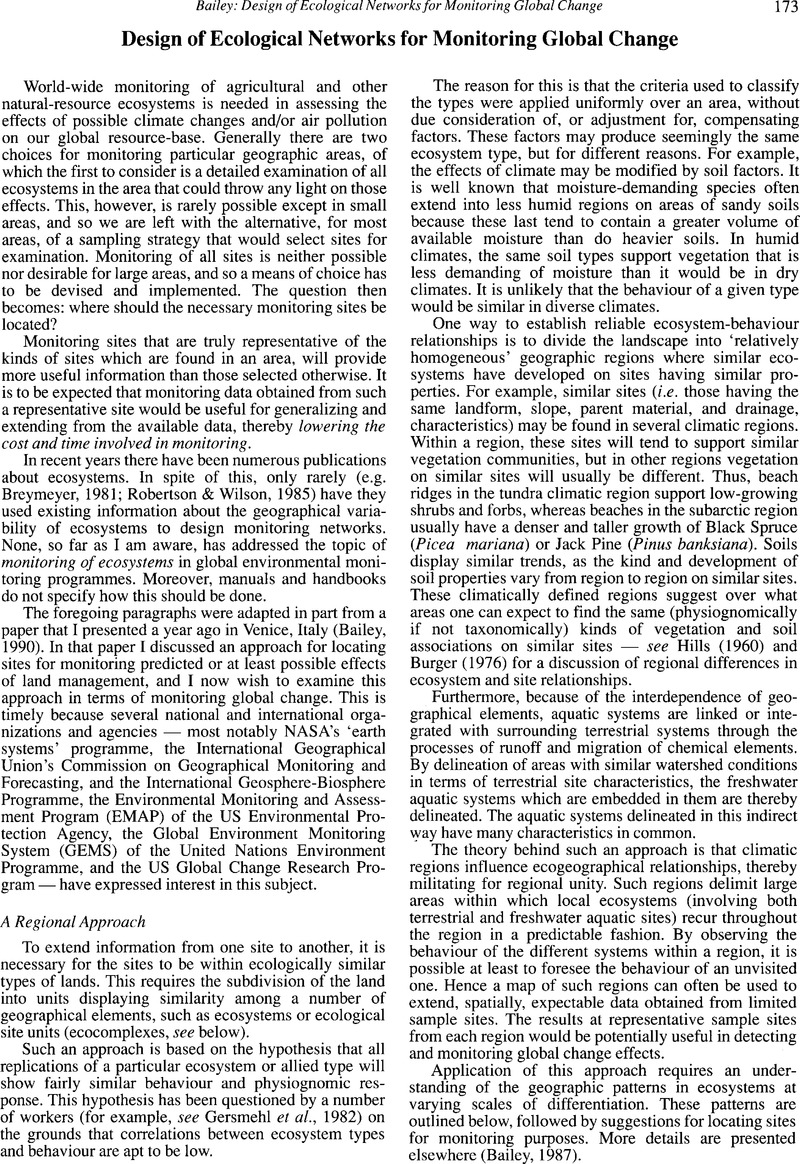Crossref Citations
This article has been cited by the following publications. This list is generated based on data provided by Crossref.
Sims, R. A.
and
Uhlig, P.
1992.
The current status of forest site classification in Ontario.
The Forestry Chronicle,
Vol. 68,
Issue. 1,
p.
64.
Bashkin, Vladimir N.
and
Bailey, Robert G.
1993.
Revision of Map of Ecoregions of the World (1992–95).
Environmental Conservation,
Vol. 20,
Issue. 1,
p.
75.
Innes, John L.
1995.
Theoretical and practical criteria for the selection of ecosystem monitoring plots in Swiss forests.
Environmental Monitoring and Assessment,
Vol. 36,
Issue. 3,
p.
271.
Peinado, M.
Alcaraz, F.
Aguirre, J. L.
Delgadillo, J.
and
Aguado, I.
1995.
Shrubland formations and associations in mediterranean-desert transitional zones of northwestern Baja California.
Vegetatio,
Vol. 117,
Issue. 2,
p.
165.
Omernik, James M.
and
Bailey, Robert G.
1997.
DISTINGUISHING BETWEEN WATERSHEDS AND ECOREGIONS1.
JAWRA Journal of the American Water Resources Association,
Vol. 33,
Issue. 5,
p.
935.
2002.
Mountain Environments in Changing Climates.
p.
364.
Schröder, Winfried
Pesch, Roland
and
Schmidt, Gunther
2006.
Identifying and closing gaps in environmental monitoring by means of metadata, ecological regionalization and geostatistics using the UNESCO biosphere reserve rhoen (Germany) as an example.
Environmental Monitoring and Assessment,
Vol. 114,
Issue. 1-3,
p.
461.
Schröder, Winfried
2006.
GIS, geostatistics, metadata banking, and tree-based models for data analysis and mapping in environmental monitoring and epidemiology.
International Journal of Medical Microbiology,
Vol. 296,
Issue. ,
p.
23.
Bailey, Robert G.
2009.
Ecosystem Geography.
p.
169.
Lozar, R. C.
Hiett, M. D.
and
Westervelt, J. D.
2011.
Climate.
p.
333.
Bailey, Robert G.
2014.
Ecoregions.
p.
111.
Yang, Juan
2016.
EMergy accounting for the Three Gorges Dam project: three scenarios for the estimation of non-renewable sediment cost.
Journal of Cleaner Production,
Vol. 112,
Issue. ,
p.
3000.
Guo, Xiaomeng
Tankpa, Vitus
Wang, Li
Ma, Fang
and
Wang, Yujiao
2021.
Framework of multi-level regionalization schemes based on non-point source pollution to advance the environmental management of small watersheds.
Environmental Science and Pollution Research,
Vol. 28,
Issue. 24,
p.
31122.
Zhang, YanQing
and
E. West, Neil
2022.
Grasses and Grassland - New Perspectives.



